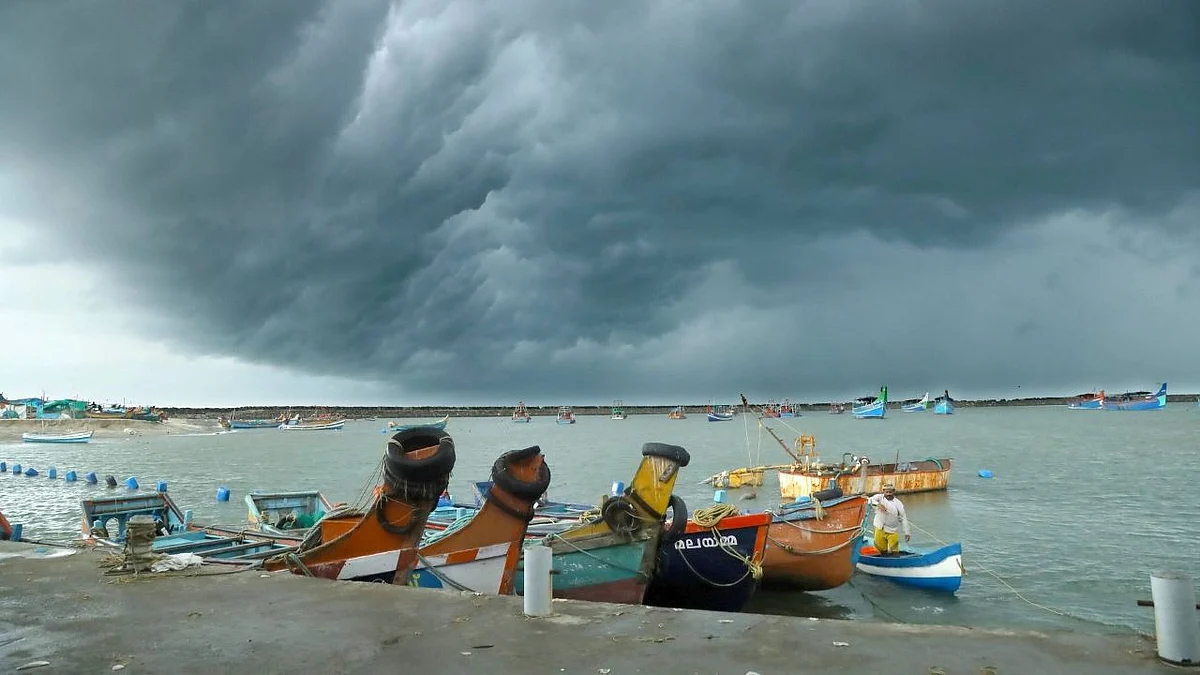Cyclone Sitrang: Which Parts of India Will Be Affected? When Will It Be Safe?
The cyclone has so far claimed the lives of 16 people in Bangladesh.

advertisement
At least 16 people lost their lives in Bangladesh after a cyclone slammed into the country, forcing the evacuation of about a million people from their homes, officials said on Tuesday, 25 October. This is the first tropical cyclone of the post-monsoon season of 2022. Thailand named the cyclone 'Sitrang'.
The last October cyclone in the Bay of Bengal was Titli in 2018.
The cyclone made landfall in southern Bangladesh late on Monday, 24 October. It crossed the Bangladesh coast near Barisal between 9.30 pm and 11.30 pm on Monday after skirting the West Bengal coast, the meteorological department stated.
In Meghalaya, in at least four districts bordering Bangladesh, the administration directed authorities to keep all educational institutes shut on 25 October in view of the cylone.
The districts are East and West Jaintia Hills, East Khasi Hills, and South West Khasi Hills. Which other states are likely to be affected by it?
Which states are likely to be affected by the cyclone?
On Monday, 24 October, a red alert indicating heavy to very heavy and extremely heavy rainfall was issued for Assam, Meghalaya, Mizoram, and Tripura.
The India Meteorological Department (IMD) on Tuesday, 25 October, tweeted that light to moderate rainfall with isolated heavy to very heavy rainfall is likely over Arunachal Pradesh and northeast Assam, and isolated heavy rainfall is likely over the rest of Assam, Meghalaya, and Nagaland on Tuesday.
Torrential rainfall, continuing since Monday, 24 October in Assam, has triggered severe waterlogging in several parts of Guwahati. Several houses were damaged due to the cyclone which caused heavy rainfall and a storm in the Nagaon district of Assam. Numerous trees and electric poles were also uprooted in various parts of the region due to the cyclonic storm on Monday night.
Why storms in October?
The months of October-November and May-June see storms of severe intensity develop in the North Indian Ocean — comprising the Bay of Bengal and the Arabian Sea — with an average of five developing in a calendar year. Over the past 131 years, October saw 61 storms brew in the Bay of Bengal, according to the Regional Specialised Meteorological Centre (RSMC). The east coast, notably Odisha, has faced many of its severest storms in October, including the Super Cyclone of 1999.
“After the withdrawal of the Southwest monsoon, there is a rise in ocean heating, which leads to a rise in sea surface temperature over the Bay of Bengal. The atmospheric moisture availability over the ocean region, too, is higher. So, when remnant systems from the South China Sea reach the Bay of Bengal, they get conducive conditions, aiding the formation and intensification of cyclones in October,” The Indian Express quoted Umasankar Das, IMD scientist from Meteorological Centre, Bhubaneshwar, as saying.
In some years, ocean-atmospheric factors hinder this phenomenon. For example, in 2020, weak La Nina conditions along the equatorial Pacific Ocean barred a cyclonic formation near India’s coasts.
How are cyclones in the Arabian Sea different?
In comparison with the Bay of Bengal, only 32 storms have developed in the Arabian Sea in October since 1891. Climatologically too, the IMD states, that of the five storms formed in the North Indian Ocean in a calendar year, four are in the Bay of Bengal and one in the Arabian Sea.
(At The Quint, we question everything. Play an active role in shaping our journalism by becoming a member today.)